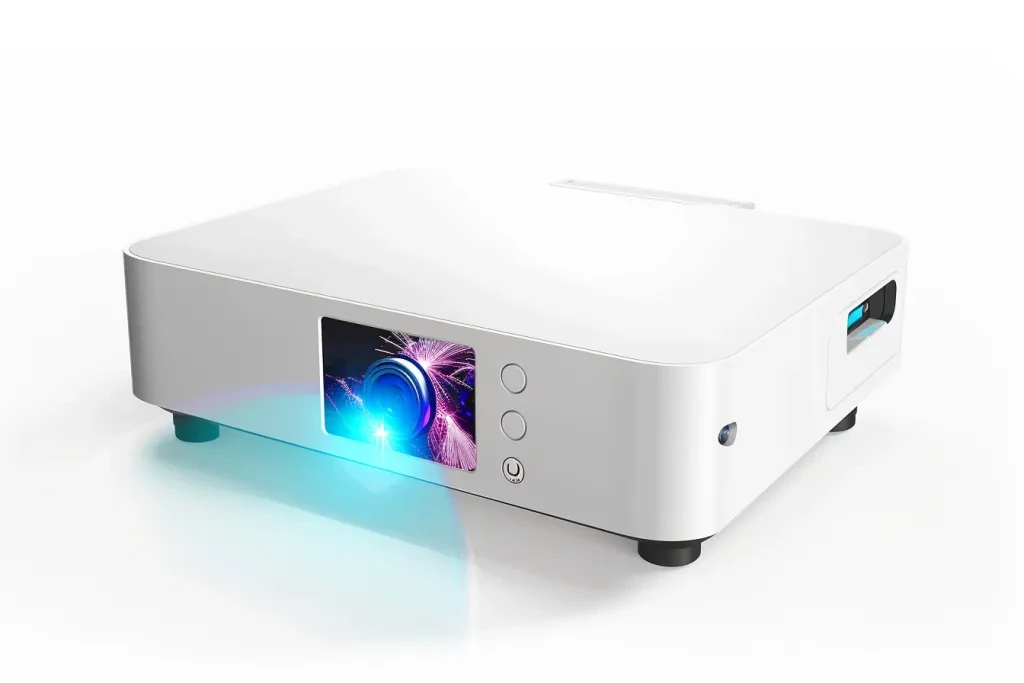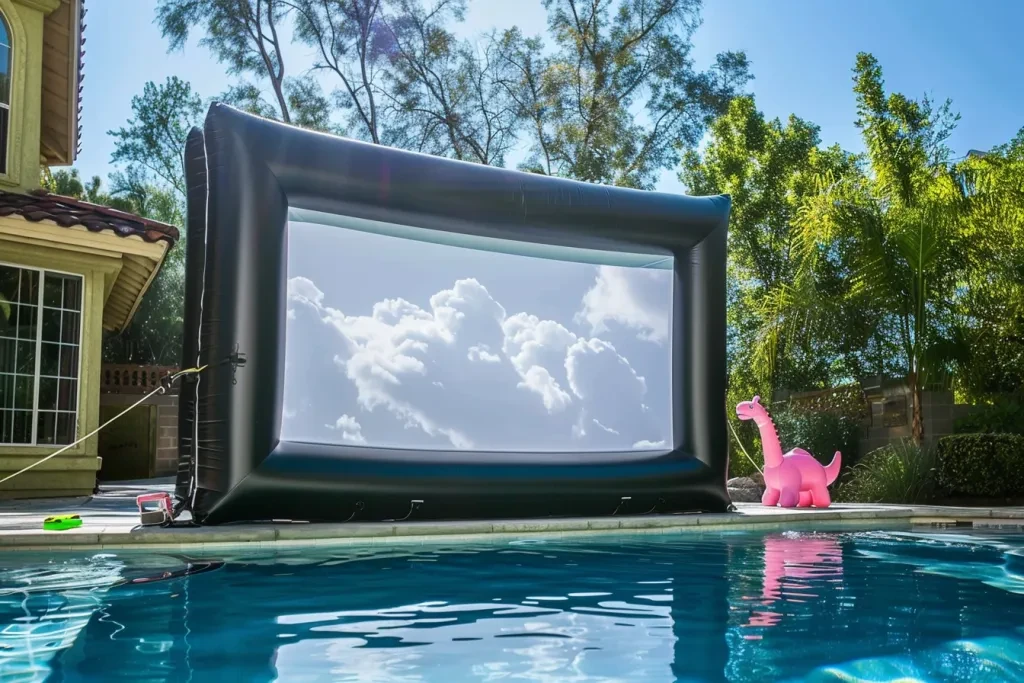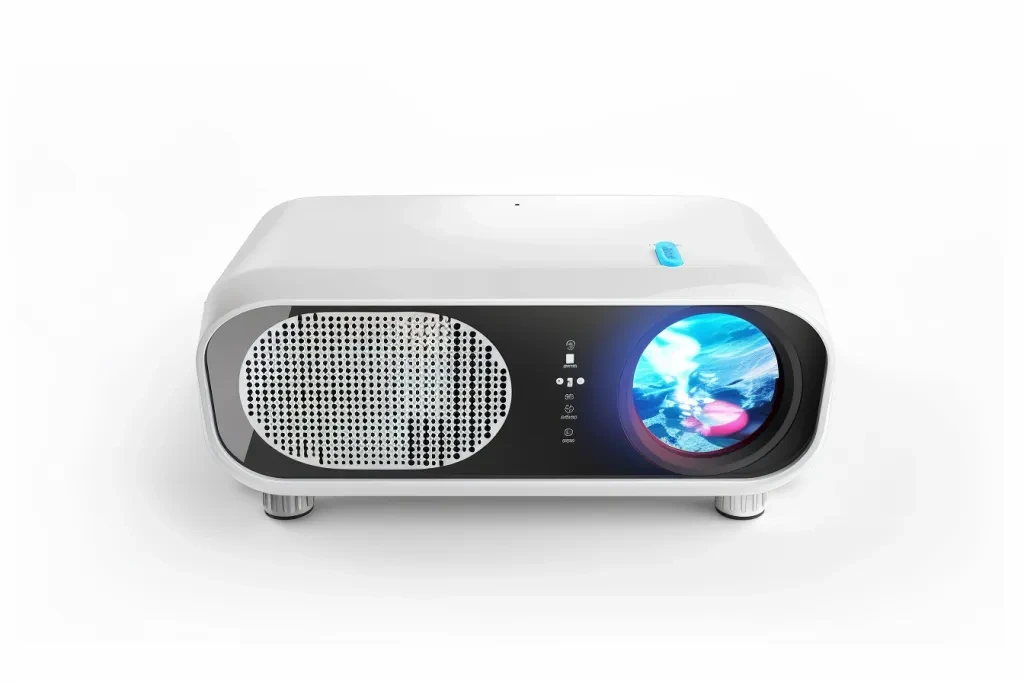In late 2024, the demand for outdoor cinema equipment is soaring, driven by global entertainment trends. This article delves into essential selection criteria for inflatable screens and projectors, providing invaluable insights for professional buyers. Explore key factors like screen size, resolution, and material quality to optimize your product offerings for 2025 and beyond.
Table of Contents:
– Market Overview of Inflatable Screen and Projector for Outdoor Cinema
– Detailed Introduction and Analysis of the Inflatable Screen and Projector Market
– Key Factors When Selecting an Inflatable Screen and Projector for Outdoor Cinema
Market Overview of Inflatable Screen and Projector for Outdoor Cinema

The global market for inflatable screens and projectors for outdoor cinema is growing significantly, driven by increasing consumer demand for versatile and portable entertainment solutions. The market size for projector screens is projected to expand from USD 2.74 billion in 2024 to USD 3.69 billion by 2030, growing at a CAGR of 5.01%. This growth is mirrored in the inflatable screens segment, benefiting from broader trends in outdoor entertainment and home cinema systems.
In regions like North America and Europe, the adoption of inflatable screens is notable due to high demand for outdoor recreational activities. Technological advancements and the popularity of home theater systems drive the market in these areas. The APAC region is also expected to see substantial growth due to rapid urbanization and a rising middle class, leading to higher disposable incomes and greater spending on leisure activities.
Industry players focus on innovations such as ambient light-rejecting (ALR) screens and integrating IoT and AI for enhanced user control and interactivity. These advancements are crucial in maintaining market competitiveness and meeting consumer preferences for high-quality, immersive viewing experiences.
Detailed Introduction and Analysis of the Inflatable Screen and Projector Market

Key Performance Benchmarks
The market for inflatable screens and projectors is characterized by several key performance benchmarks. High-definition (HD) and 4K resolution capabilities are becoming standard, ensuring excellent picture quality even in outdoor settings. The market is also seeing an increase in the use of lightweight, durable materials that enhance portability and ease of setup. Advanced light sources like LED and laser technology further improve brightness and image clarity, making these products suitable for various ambient lighting conditions.
Market Share Dynamics
The market is dominated by a few key players, including Elite Screens Inc., Seiko Epson Corporation, and BenQ Corporation. These companies hold significant market shares due to their robust product portfolios and continuous innovation. For example, Elite Screens’ ezCinema Tab-Tension CineGrey 4D projection screen emphasizes superior image clarity and color accuracy. The competitive landscape is also influenced by strategic partnerships, such as the collaboration between IBS and BenQ to enhance technological innovation and market reach in regions like Egypt.
Economic Influences and Consumer Behavior Shifts
Rising disposable incomes and increased spending on leisure activities are propelling market growth. Consumers are increasingly seeking high-quality, versatile entertainment options that can be easily set up in various environments. The shift towards outdoor and home-based entertainment, exacerbated by recent global events, has further fueled demand for inflatable screens and projectors. Seasonal demand patterns also play a role, with higher sales typically observed during warmer months when outdoor activities are more prevalent.
Distribution Channel Preferences
The distribution of inflatable screens and projectors is predominantly through online channels, which offer a wide range of products and competitive pricing. However, physical retail stores also play a crucial role, especially for consumers who prefer to see and test products before purchasing. The rise of e-commerce platforms has enabled manufacturers to reach a broader audience and provide detailed product information, reviews, and comparisons, facilitating informed purchasing decisions.
Recent Innovations and Product Lifecycle Stages
Recent innovations in the market include the development of ambient light-rejecting screens, which significantly enhance viewing experiences in various lighting conditions. Additionally, incorporating smart features like wireless connectivity and voice control aligns with consumer preferences for convenience and ease of use. The product lifecycle of inflatable screens and projectors typically involves stages of introduction, growth, maturity, and decline, with current trends indicating a strong growth phase driven by technological advancements and increasing consumer adoption.
Environmental Regulations and Sustainability
Environmental regulations are becoming more stringent, pushing manufacturers to adopt sustainable practices in production. The use of eco-friendly materials and energy-efficient technologies is gaining traction, aligning with global sustainability trends. Companies are exploring recyclable and biodegradable materials for screen production, addressing both consumer and regulatory demands for environmentally responsible products.
Customer Pain Points and Brand Positioning Strategies
Common customer pain points include the complexity of setup and the durability of inflatable screens in varying weather conditions. Brands address these issues by offering easy-to-assemble products with robust construction and weather-resistant features. Effective brand positioning strategies involve emphasizing these qualities, along with superior image quality and innovative features, to differentiate from competitors and attract a loyal customer base.
Differentiation Strategies and Niche Markets
Differentiation strategies focus on offering unique features such as high brightness, enhanced portability, and advanced connectivity options. Targeting niche markets, such as outdoor event organizers and educational institutions, provides additional growth opportunities. These segments require specialized products that cater to specific needs, such as large screen sizes for public screenings and interactive capabilities for educational purposes.
Key Factors When Selecting an Inflatable Screen and Projector for Outdoor Cinema

Screen Size and Aspect Ratio
Screen size and aspect ratio are critical when choosing an inflatable screen for outdoor cinema. Larger screens provide a more immersive experience, with sizes ranging from 12 to 40 feet diagonally. A 16 to 20-foot screen is often sufficient for a backyard setup, while larger venues may require screens up to 40 feet.
Aspect ratio is another essential factor. The most common aspect ratios are 16:9 and 4:3. A 16:9 aspect ratio is ideal for widescreen movies, offering a cinematic experience similar to commercial theaters. In contrast, a 4:3 aspect ratio is better suited for presentations or older films. Understanding the primary use case will help in choosing the right aspect ratio.
Projector Brightness and Resolution
Projector brightness, measured in lumens, is vital for outdoor cinema as it determines the visibility of the projected image in various lighting conditions. For nighttime viewing, a projector with at least 2,000 lumens is advisable. For environments with ambient light, such as twilight or urban areas, a projector with 3,000 to 5,000 lumens is preferable to ensure a clear and vibrant image.
Resolution impacts the clarity and detail of the projected image. Full HD (1920×1080) resolution is the standard for a high-quality viewing experience. For those seeking even higher quality, 4K projectors (3840×2160) are available but come at a higher price point. The choice between HD and 4K will depend on budget and the level of detail desired.
Material and Build Quality
The material and build quality of the inflatable screen are crucial for durability and performance. High-quality screens are typically made from PVC or Oxford cloth, which are durable, weather-resistant, and provide excellent image reflectivity. The frame should be robust enough to withstand wind and other outdoor elements. Reinforced stitching and sturdy seams are indicators of a well-constructed screen.
Additionally, screens with black backing prevent light penetration, enhancing contrast and image quality. Some models also come with a detachable white screen for easy cleaning and maintenance. Investing in a high-quality screen ensures longevity and consistent performance.
Portability and Ease of Setup
Portability and ease of setup are significant considerations, especially for those planning to use the screen in various locations. Inflatable screens should come with a high-powered air blower that can inflate the screen within minutes. Look for models that offer a quick and straightforward setup process, including clear instructions and minimal components.
The weight and storage size of the screen when deflated are also important. Compact and lightweight designs are easier to transport and store. Some screens come with carrying bags, adding to their portability. Ensuring the screen is easy to set up and move will enhance the overall user experience.
Additional Features and Accessories
Additional features and accessories can enhance the functionality and convenience of an inflatable screen and projector setup. Some screens come with built-in tethers and stakes for added stability, essential for outdoor use where wind can be a concern. Integrated fans or blowers that operate quietly are also a plus, ensuring that the noise does not interfere with the viewing experience.
Projectors with wireless connectivity options, such as Bluetooth or Wi-Fi, allow for easy streaming from various devices, adding flexibility to the setup. Some projectors also come with built-in speakers, although external speakers are often recommended for better audio quality. Accessories like extension cords, HDMI cables, and projector stands can further simplify the setup and enhance the overall experience.
Considering Environmental Factors
Environmental factors play a significant role in the performance and longevity of inflatable screens and projectors. It is essential to consider the weather conditions typical to the location where the equipment will be used. For example, areas prone to high winds may require screens with additional anchoring options.
Dust and humidity can also affect the projector’s performance. Projectors with sealed optics are better suited for dusty environments, as they prevent dust from entering the lens and affecting image quality. In humid areas, moisture-resistant screens and projectors with proper ventilation to avoid overheating are advisable.
Budget and Price Range
The budget is a crucial consideration when selecting an inflatable screen and projector for outdoor cinema. Prices can vary significantly based on size, quality, and features. Inflatable screens typically range from $200 to $1,500, with larger and higher-quality models at the higher end of the price spectrum.
Projectors have an even broader price range, from $300 for basic models to over $3,000 for high-end 4K projectors. It is essential to balance the desired features and quality with the available budget. Investing in a good-quality screen and projector within the budget will ensure a satisfactory viewing experience.
Customer Support and Warranty
Customer support and warranty are essential factors to consider, as they provide peace of mind and protection against defects and issues. Reputable manufacturers offer comprehensive warranties covering both the screen and projector, typically ranging from one to three years.
Good customer support can assist with setup, troubleshooting, and maintenance, ensuring a smooth and hassle-free experience. Reading reviews and testimonials can provide insights into the reliability and responsiveness of the manufacturer’s customer service.
Conclusion
In summary, selecting the right inflatable screen and projector for outdoor cinema involves considering several key factors, including screen size and aspect ratio, projector brightness and resolution, material and build quality, portability and ease of setup, additional features and accessories, environmental factors, budget and price range, and customer support and warranty. By carefully evaluating these factors, buyers can make informed decisions that enhance their outdoor cinema experience.




